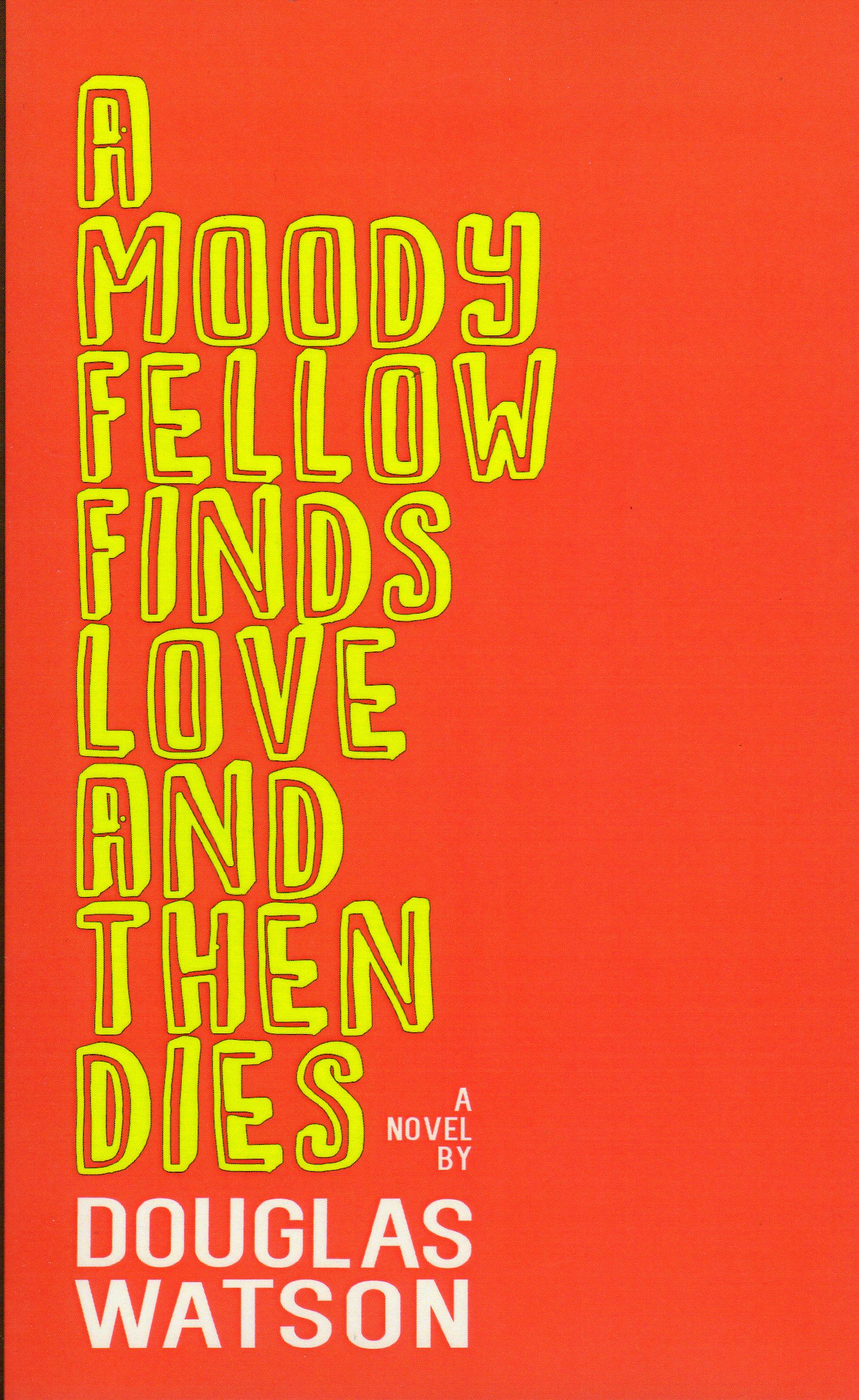A Moody Fellow Finds Love and Then Dies
There are a few things that make A Moody Fellow Finds Love and Then Dies feel like a modern fairytale: its decidedly lyrical verse, the pithy unseen narrators, and the fanciful notions of people dropping dead upon seeing one of the most beautiful women to ever live. The structure of the novel, however, is what lends the book most to this form. As is common with fairytales, perhaps because they seem to follow a particular formula, the reader knows, more or less, what is going to happen before it even begins. A moody fellow, who is moody and whose name is actually Moody Fellow, does indeed find love and then die. Moody begins as someone with a rather naïve impression of love: “One thing Moody was sure of, though, from books: love always brought out the best in people. Poor Moody. He really wasn’t cut out for the world as we know it.”
Along the way, he tries to discover what love actually means, particularly in terms of its relationship to sex. It’s partly this relationship to sex that permeates the novel and makes it feel like a postmodern fairytale. Moody spends a lot of time, along with a beauty named Amanda and a struggling artist named Chad, trying to figure out what his place is in the world. We follow him through the big points of his life, as we do with Amanda, particularly during their college years. Watson definitely plays with the increasingly popular idea of the Quarter-Life Crisis and the wonder and worry that plagues young adults about what their lot in life is supposed to be. This makes a set of characters who are rather fanciful much more relatable. We can all empathize with Moody’s insecurity about sex and relationships. The novel, in some ways, becomes just as much about loving oneself as it is about finding love with someone else.
If there is one thing about the playful nature of the novel that may detract from the strength of the connection with the characters, it would be that while reading I at times felt much more intrigued by the narrators. They constantly offer up small quips like:
Halfway back to his dorm, Moody came very close to being murdered by a bolt of lightning. Indeed, we were in the mood to see him killed, but it occurred to us that he hadn’t found love yet, which meant that according to the terms laid out at the beginning of the narrative, he had to be allowed to live a little bit longer – and so we nudged the lightning bolt twenty feet to Moody’s left, where it slammed into, or rather through, a chipmunk, poor thing. Who now would provide for that former chipmunk’s family?
The narrators, or one narrator who refers to him or herself in the plural, have a personality all of their own. It was nice, for a change, to feel like I was being told a story. The lyrical aspect of Watson’s verse quickly lulled me into a comfortable relationship with A Moody Fellow Finds Love and Then Dies. That being said, there were moments where I wondered whether the experimentation was too much at once and whether it detracted from some of the very clever turns he made. Watson’s playfulness with style extended to structure and form as well, particularly in his lack of quotations.
Moody was a rather successful protagonist who was likable, despite the somewhat rushed amount of time it seemed we had with him. Amanda was someone who it took a bit longer to warm to as a character because I wondered whether there was anything to her other than her unnatural beauty. Perhaps, had the experimentation with style and form been more selective, the character development could have been expanded upon. That being said, Watson deserves respect and A Moody Fellow Finds Love and Then Dies is absolutely worth reading, including for the willingness to buck traditional expectations of narration and style.





